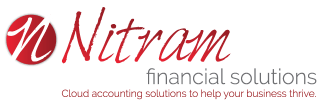If you’ve ever glanced at your bank balance and wondered, “I made money, but where did it all go?” you’re not alone. Managing cash flow effectively is one of the most crucial challenges business owners face. Fortunately, improving your cash flow doesn’t require an accounting degree or endless hours buried in spreadsheets. With a few strategic moves, you can take control of your finances and set your business up for success. Starting this weekend.
There are 3 practical and actionable steps designed to provide clarity, organization, and predictability to your business finances so you can make smarter decisions with confidence. Whether you’re a consultant, interior designer, coach, contractor, or any other service provider, these tips will help you boost your cash flow and avoid those frustrating “where did it all go?” moments.
Win #1 – Cash Flow Clarity Snapshot
Before you can improve your cash flow, you need to understand exactly what’s happening with your money. That’s why the first cash flow win is to create a 30-day cash flow snapshot. This simple exercise gives you a clear picture of all the cash coming in and going out of your business over the next month.
Here’s how to get started:
- Choose your tool: Grab a calendar, a spreadsheet, or even a piece of paper. While spreadsheets aren’t required, they can make this process easier if you’re comfortable using them.
- Record all inflows and outflows: Map out every payment you expect to receive and every expense you anticipate over the next 30 days. If your bookkeeping is up to date, you can print a report from your accounting system to help with this step.
- Include expected income: Add any deposits, client payments, or other expected inflows to your snapshot.
- Identify timing: Pay attention to when money is coming in and when bills are due. This will help you see if you have enough funds to cover upcoming expenses.
This snapshot isn’t about long-term forecasting. Instead, it focuses on the immediate future so you can assess your current cash position and plan accordingly. The goal is to help you make business decisions with your eyes wide open, avoiding guesswork and surprises.
For example, after completing your snapshot, you might discover that you’ll run low on cash in two weeks, prompting you to take action now, like reaching out to clients for early payments or delaying non-essential expenses. On the other hand, if your snapshot shows a healthy cash balance, you can confidently invest in growth opportunities or new projects.
Win #2 – Separate Your Project Money from Your Profitability
The second weekend cash flow win is especially important for consultants, interior designers, business coaches, contractors, and anyone who receives large lump sums of money upfront from clients. The key here is to keep your project funds separate from your operating money.
Let’s say you receive a $6,000 deposit for a new project. Part of that money is meant to cover materials, furnishings, or other direct project expenses. Another portion should cover your operating costs like rent, insurance, and payroll. However, many businesses make the mistake of putting all that money into one operating account. This can lead to confusion and cash flow problems when project costs get mixed with everyday business expenses.
Here’s what you should do instead:
- Open a separate bank account: Create a dedicated account for project funds. You can name it something like “Project Funds,” “Client Funds,” or “Project Reserves.”
- Deposit client payments into this account: When a client pays a deposit or installment, put that money directly into the project account.
- Transfer funds as earned: As you complete work and earn revenue, transfer the appropriate amounts from the project account to your operating account.
This system helps you clearly see how much money is allocated for each project and prevents you from accidentally spending those funds on unrelated business expenses. It also protects your profitability by ensuring that project costs are covered without compromising your ability to pay your bills.
To make this work smoothly, you should:
- Price your services carefully: Make sure your deposits and pricing cover both project costs and operating expenses. If you’re not sure how to do this, it’s worth investing time in pricing strategy or consulting a financial advisor.
- Create an allocation system: Decide what percentage of each payment goes to project costs, operating expenses, taxes, and profit. This way, you’ll have a clear roadmap for where every dollar should go.
By separating your project money, you gain better control over your cash flow and reduce financial stress. You’ll know exactly what funds are available for projects versus what you need to keep the business running.
Win #3 – Separate Your Subscriptions Money to Prevent Money Leaks
Subscriptions are one of the sneakiest cash flow drains. They creep up on you throughout the month and before you know it, you’re hit with a big annual payment you forgot about. $97 here for a software tool, $12 there for an app, $29 for another service. Sound familiar? You’re not alone.
The third weekend cash flow win is to create a system to save and pay for your subscriptions without stress or surprises.
Here’s how:
- Allocate money for subscriptions: Every time money comes into your business, set aside a percentage specifically for subscription expenses.
- Use one credit card for all subscriptions: Charge all recurring subscription fees to a single credit card. This simplifies tracking and ensures you know exactly how much you’re spending on these services.
- Pay off the subscription card monthly: Use the money you’ve allocated to pay off the subscription credit card in full every month, avoiding interest charges and keeping your cash flow steady.
If you don’t have a business credit card, you can achieve the same effect by creating a separate bank account just for subscriptions and paying them directly from there.
In my business, we allocate incoming income into several buckets based on percentages: taxes, profit, operating expenses, payroll, and more. A significant portion of the operating expenses bucket goes towards paying the subscription credit card. This system, inspired by Mike Michalowicz’s book Profit First, has allowed us to stay on top of our expenses without surprises.
By setting money aside for subscriptions proactively, you avoid the common pitfall of subscriptions draining your cash flow unnoticed. This also frees you from the stress of wondering if there’s enough in the bank to cover these recurring charges.
Final Thoughts
These simple yet powerful steps can transform how you manage cash flow and give you the confidence to make informed business decisions. You don’t need complicated spreadsheets or advanced accounting knowledge, just a willingness to organize your finances and put systems in place.
By dedicating just a weekend to these strategies, you will gain a fresh, clear understanding of your finances and a practical plan to keep your cash flowing smoothly. Remember, the foundation of good cash flow management is clarity and control. When you know exactly where your money is coming from and where it’s going, you can avoid surprises and focus on growing your business.
Take action this weekend — create your 30-day cash flow snapshot, separate your project funds, and set up your subscription savings system. Your bank balance will thank you.









